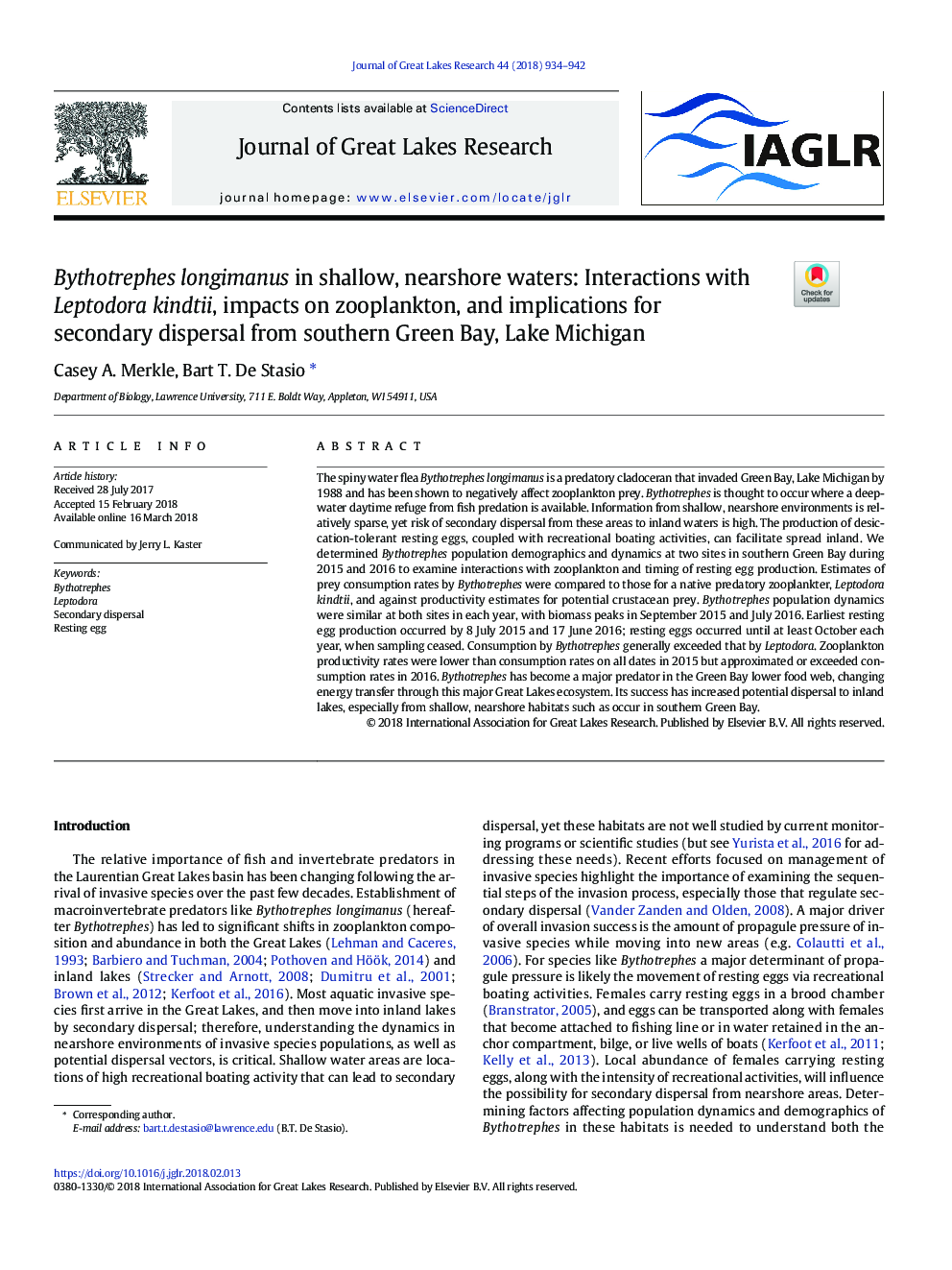| Article ID | Journal | Published Year | Pages | File Type |
|---|---|---|---|---|
| 11010239 | Journal of Great Lakes Research | 2018 | 9 Pages |
Abstract
The spiny water flea Bythotrephes longimanus is a predatory cladoceran that invaded Green Bay, Lake Michigan by 1988 and has been shown to negatively affect zooplankton prey. Bythotrephes is thought to occur where a deep-water daytime refuge from fish predation is available. Information from shallow, nearshore environments is relatively sparse, yet risk of secondary dispersal from these areas to inland waters is high. The production of desiccation-tolerant resting eggs, coupled with recreational boating activities, can facilitate spread inland. We determined Bythotrephes population demographics and dynamics at two sites in southern Green Bay during 2015 and 2016 to examine interactions with zooplankton and timing of resting egg production. Estimates of prey consumption rates by Bythotrephes were compared to those for a native predatory zooplankter, Leptodora kindtii, and against productivity estimates for potential crustacean prey. Bythotrephes population dynamics were similar at both sites in each year, with biomass peaks in September 2015 and July 2016. Earliest resting egg production occurred by 8 July 2015 and 17 June 2016; resting eggs occurred until at least October each year, when sampling ceased. Consumption by Bythotrephes generally exceeded that by Leptodora. Zooplankton productivity rates were lower than consumption rates on all dates in 2015 but approximated or exceeded consumption rates in 2016. Bythotrephes has become a major predator in the Green Bay lower food web, changing energy transfer through this major Great Lakes ecosystem. Its success has increased potential dispersal to inland lakes, especially from shallow, nearshore habitats such as occur in southern Green Bay.
Related Topics
Physical Sciences and Engineering
Earth and Planetary Sciences
Earth and Planetary Sciences (General)
Authors
Casey A. Merkle, Bart T. De Stasio,
